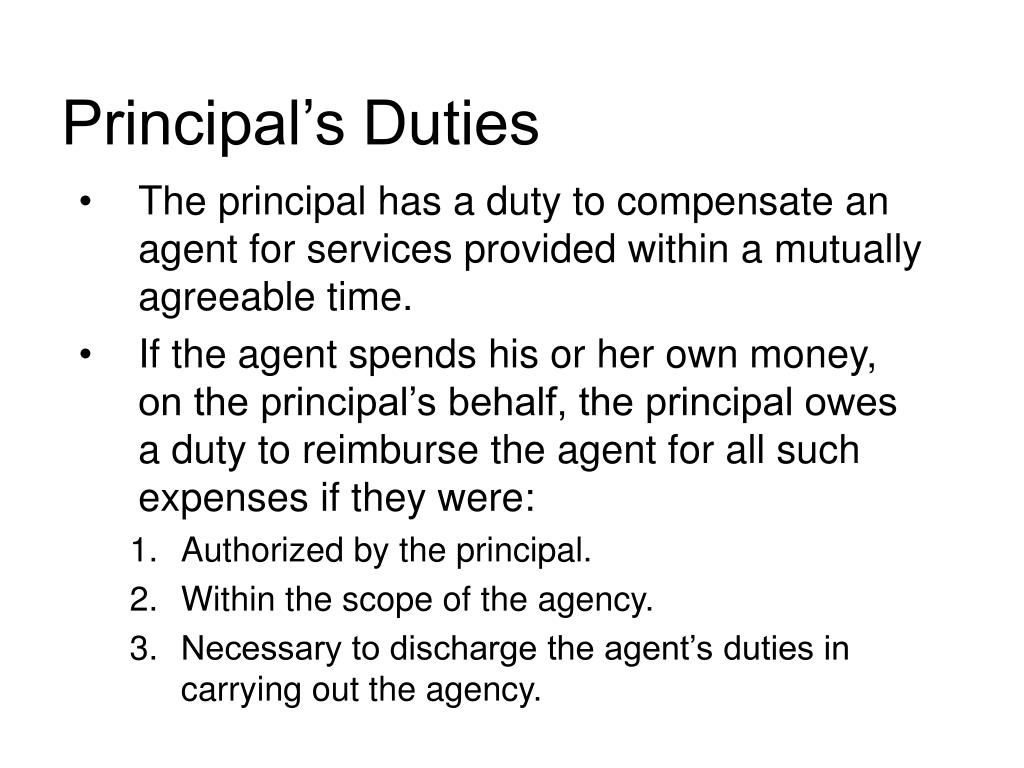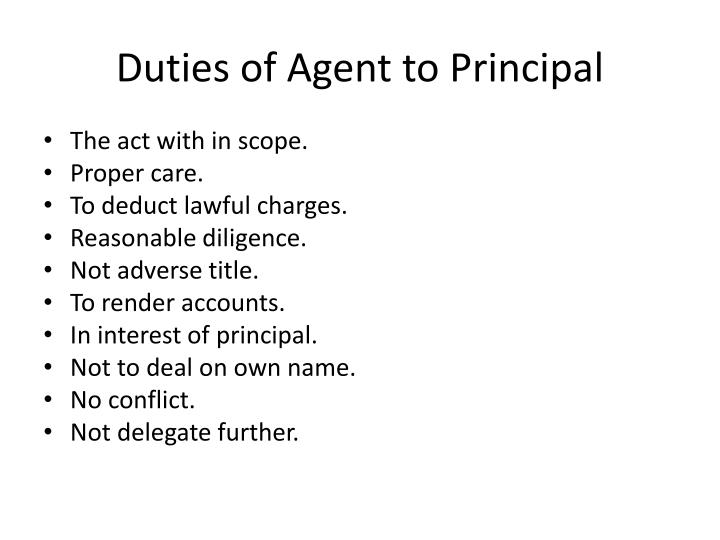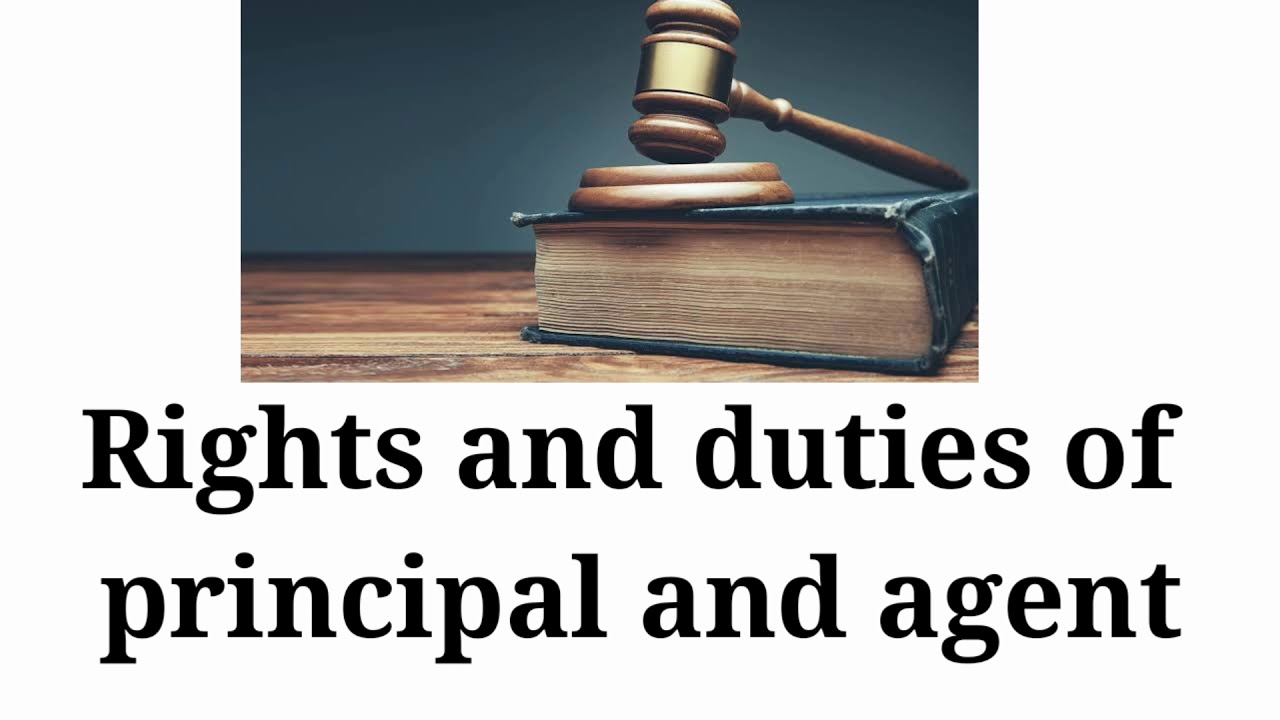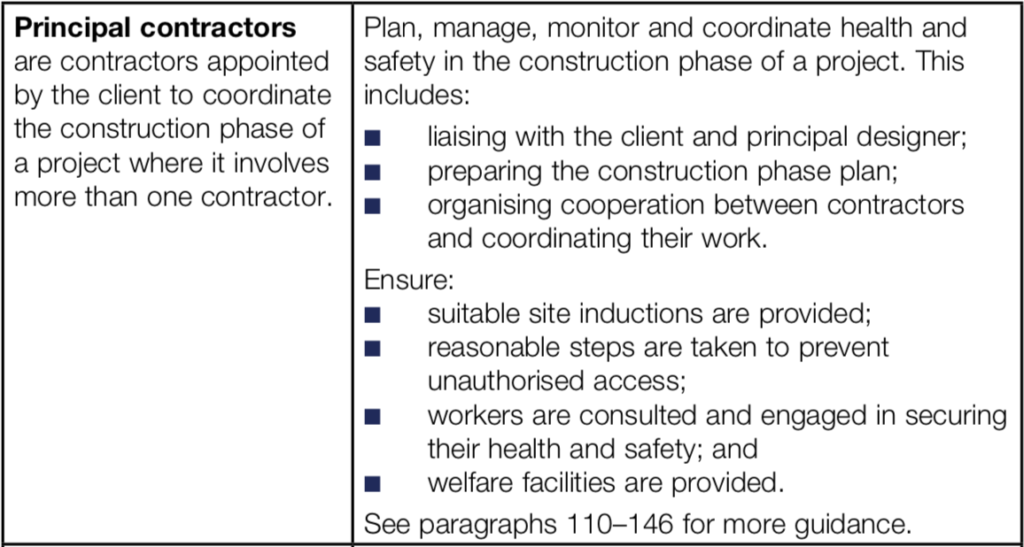The Principal's Key Duties to Their Agent

Welcome to a comprehensive exploration of the principal's pivotal role in the principal-agent relationship, a cornerstone of modern business and governance. This article delves into the critical duties and responsibilities of the principal, offering an in-depth analysis with real-world examples and practical insights.
The Principal: A Definition

In the context of principal-agent theory, the principal is the party who appoints an agent to act on their behalf. This relationship is a fundamental aspect of business, politics, and various other fields, where the principal’s role is to delegate tasks, make decisions, and oversee the overall strategy.
The principal's duties are multifaceted and critical to the success of any organization or project. Let's explore these duties in detail, backed by real-world examples and expert insights.
Duties of the Principal

1. Task Delegation and Oversight
One of the principal’s key responsibilities is delegating tasks to the appointed agent. This involves a clear understanding of the agent’s capabilities and a strategic approach to task allocation. For instance, in a corporate setting, a CEO (principal) might delegate specific marketing campaigns to the CMO (agent), ensuring a clear division of labor and expertise.
The principal also oversees the agent's work, providing guidance, feedback, and necessary resources. This oversight ensures that the agent's actions align with the principal's goals and strategies. A real-world example could be a property owner (principal) overseeing a real estate agent's (agent) efforts to sell a property, ensuring the agent's tactics are in line with the owner's expectations.
2. Decision-Making Authority
The principal holds the ultimate decision-making power in the principal-agent relationship. This authority allows the principal to set the direction and strategy for the organization or project. In a political context, a party leader (principal) decides the party’s platform and policies, which the elected representatives (agents) must advocate for.
However, effective decision-making involves more than just authority. It requires a nuanced understanding of the agent's perspective and the broader context. For instance, a sports team owner (principal) might make strategic decisions about player signings, but they must consider the coach's (agent) input and the team's overall dynamics.
| Decision Type | Example |
|---|---|
| Strategic | A CEO deciding on a new market entry strategy. |
| Operational | A property manager choosing maintenance contractors. |

3. Monitoring and Evaluation
The principal is responsible for monitoring the agent’s performance and evaluating their effectiveness. This duty ensures that the agent’s actions remain aligned with the principal’s goals and that any issues or deviations are addressed promptly.
Monitoring can take various forms, from regular performance reviews to real-time data analytics. For instance, an investment fund manager (principal) might monitor the trading activities of their portfolio managers (agents) through detailed performance reports.
4. Resource Allocation
Allocating resources to the agent is another critical duty of the principal. This includes financial resources, human resources, and other assets necessary for the agent to perform their duties effectively.
For instance, a government (principal) allocates funds to various departments (agents) based on their strategic priorities and needs. Similarly, a project manager (principal) might allocate team members (agents) to specific tasks, ensuring a balanced workload and skill utilization.
| Resource Type | Example |
|---|---|
| Financial | A corporation providing a marketing budget to its marketing team. |
| Human | A school principal assigning teachers to specific subjects and grades. |
5. Risk Management
The principal is ultimately responsible for managing risks associated with the agent’s actions. This involves identifying potential risks, developing mitigation strategies, and ensuring that the agent operates within an acceptable risk framework.
For example, a bank (principal) manages the risk associated with its loan officers (agents) by implementing lending guidelines and credit scoring systems. Similarly, a project manager might establish risk assessment protocols to ensure that their team's actions are within an acceptable risk threshold.
6. Communication and Alignment
Effective communication between the principal and agent is essential for maintaining alignment and ensuring that both parties understand each other’s perspectives and goals.
The principal should communicate their expectations, strategies, and feedback clearly to the agent. Regular meetings, performance reviews, and open channels of communication are vital for maintaining this alignment. For instance, a CEO might hold weekly strategy meetings with the C-suite to ensure everyone is on the same page.
Conclusion
The principal’s duties in the principal-agent relationship are multifaceted and critical to the success of any organization or project. From task delegation to risk management, the principal’s role is to guide, oversee, and empower their agents to achieve shared goals.
By understanding and effectively executing these duties, principals can create a collaborative, high-performing environment, driving success and growth. The principal-agent relationship is a dynamic, complex interplay, and a deep understanding of these duties is essential for effective leadership and governance.
FAQs
What happens if the principal fails to perform their duties effectively?
+
Failure to perform these duties can lead to misalignment, inefficiency, and even conflict within the principal-agent relationship. For instance, if a principal fails to provide clear guidance or allocate resources effectively, agents may struggle to perform their tasks, leading to dissatisfaction and reduced productivity.
How can principals ensure effective communication with their agents?
+
Effective communication requires a proactive approach. Principals should establish clear channels of communication, encourage open dialogue, and actively listen to their agents’ perspectives. Regular meetings, performance reviews, and feedback sessions can facilitate effective communication.
What strategies can principals employ to manage risks effectively?
+
Risk management strategies can vary depending on the context. Principals should identify potential risks, assess their likelihood and impact, and develop mitigation plans. This might involve implementing policies, guidelines, or systems to control and manage risks. Regular risk assessments and reviews are essential to ensure ongoing effectiveness.
How do principals balance oversight and trust in their agents?
+
Balancing oversight and trust is a delicate task. Principals should provide clear performance metrics, guidelines, and feedback mechanisms to guide their agents. Regular monitoring and evaluation can help identify issues early on, while also allowing agents the autonomy to make decisions and take ownership of their work.
What is the role of incentives in the principal-agent relationship?
+
Incentives play a crucial role in motivating agents and aligning their interests with those of the principal. Principals can use various incentive structures, such as performance-based bonuses, promotions, or recognition programs, to encourage agents to act in the best interests of the organization.



